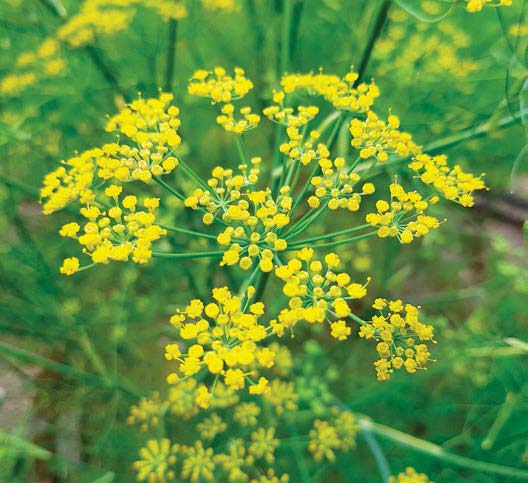Wild fennel Foeniculum vulgare also called fenkel, sweet fennel, finule, is a hardy, frost tolerant biennial or short-lived perennial in the carrot family. It originated in the Mediterranean basin and has naturalised in many parts of the world. It was first recorded in Australia in 1803, and is widely distributed here. Its preferred habitat is rough terrain: empty lots, beside roads and railway lines, in fields, on hillsides and ocean cliffs. It’s particularly well-adapted to disturbed soils, which has enabled its rampant spread.
Fennel is one of the nine sacred healing plants of pre-Christian Europe; one of the ‘Nine Herbs Charm’ of Anglo-Saxon cosmology. Wild fennel is different from the cultivated variety, which has flavourless leaves but an edible, fibrous, iron-rich bulb. Wild fennel doesn’t produce a bulb, but it does produce a thick perennial rootstock. It has highly aromatic leaves and seeds that offer both medicinal and culinary uses and, alongside similar-tasting anise, is one of the primary ingredients in the liqueur absinthe. Wild fennel releases allelopaths (chemical inhibitors) so doesn’t make good a companion for tomatoes and beans.

